The moves look improvised. But NYC's underground dance culture follows the rules.
Jaeran Mauricio is a 16-year-old dancer with neatly braided cornrows falling across his shoulders in a gentle curve. He has the wide smile of a rock star, except his smile is more innocent than beguiling, and it usually appears when Mauricio is feeling bashful about some incredible dance move he’s just accomplished, or one he’s about to try. His speech arrives in a happy slur that can seem performative, like he’s mimicking the chilliest West Coast surfer dude he can imagine. His braids, his smile, his pattern of speech, all of it conjures a relaxed haziness, a vibe that ends the moment Mauricio starts to dance.
When Mauricio dances, there is nothing slurry about it. His dance is angular. Propulsive. In a moment Mauricio is reborn Loco, his dance name. His flowy walk erupts in an akimbo boxing match of elbows and ankles. Every move explodes from his sternum at a 45-degree angle. Mauricio is a rising talent in Litefeet, a hip-hop subgenre born in Harlem and the Bronx that values cockeyed dance moves performed with great precision and speed.
More:Some riders throw money. Others throw orange soda. The kings of subway dance endure
I’ve watched Mauricio dance dozens of times now. Each time I see nothing, really, just the same staccato blur.
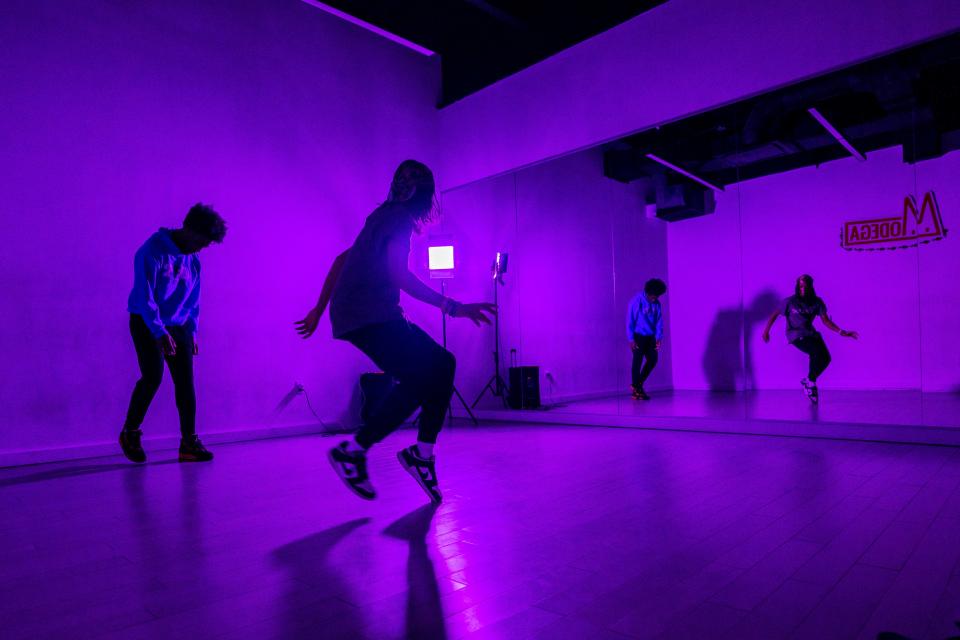
So I stopped watching. Instead, I learned that every time Mauricio starts to dance, I should reach for my phone, open the camera and start recording. Among the first videos I made is one of Mauricio dancing for 28 seconds. It begins with a warmup sequence called the Rev-Up, which signals to Mauricio’s fellow Litefeet dancers that his formal presentation has begun. He floats left, then right, kicking out both heels. He performs a slow pirouette, then drops to a half-split. He does the Motorcycle. The Tut. The John O Clap. He drops again, sweeping his leg beneath his body like a breakdancer. He does the Worm, only instead of writhing on his belly, he rolls off his right shoulder. Finally comes a Lock-In, a propulsive out-in with his legs and arms that ends in a big stomp. Among Litefeet cognoscenti, the Lock-In means the freestyle portion of the dance has concluded. Mauricio cedes the floor.
Run that tape again.
That’s 19 distinct moves in 28 seconds. Mauricio’s routine encompasses a circle 30 feet in diameter. He has consumed elevations as varied as lying on the floor to leaping a foot into the air.
Even more interesting than all the space Mauricio occupies is his great bringing-together of time.
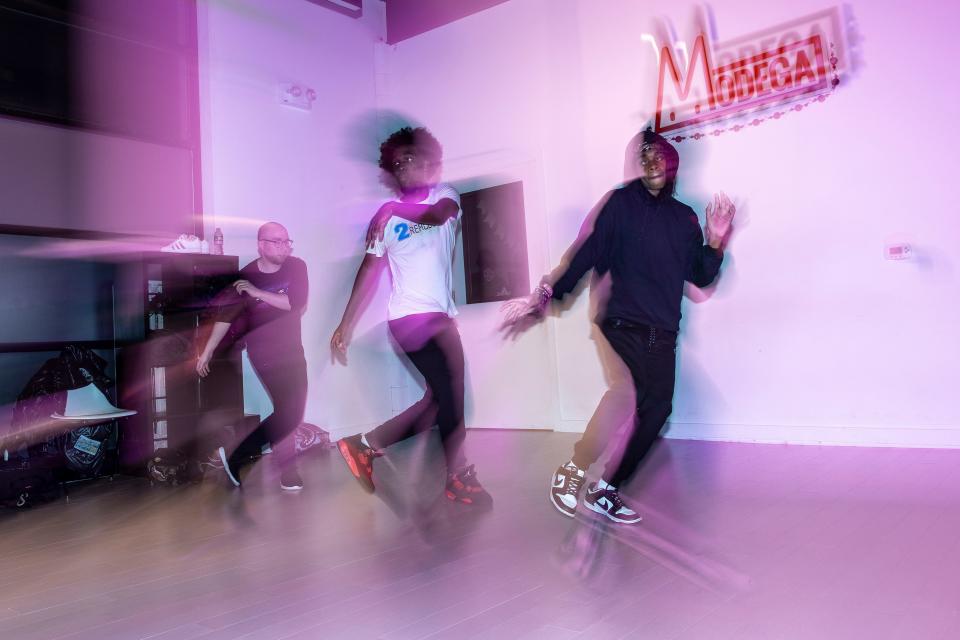
Mauricio calls his split the Five Thousand. His grandparents might recognize it better as the James Brown. The leg sweep originated as the Helicopter in about 1975 among the Zulus, one of New York’s first breakdancing crews. The Worm dates to the 1920s. His little heel kicks? Litefeeters call that the Whop. It’s a variation on the Charleston, a dance popularized in New York City in 1923. It came from the Gullah, a culture of people formerly enslaved on barrier islands and the mainland coast of Georgia and South Carolina, said Moncell Durden, a historian and dance professor at the University of Southern California. The Gullah brought it to North America from what is now the Republic of Guinea, in northwestern Africa, Durden said, where the Whop originated in a dance called the Yankadi, in the era before slavery began.
“They’re trying to be something new and fresh,” said Raphael Xavier, a dance professor at Princeton University. “But they’re just borrowing from a lot of different styles that are part of the vernacular of Black culture.”
Buried beneath Mauricio’s individual moves lies an architecture even more subterranean. The structure consists of an introduction, a freestyle section and a conclusion. As the pirouette is to ballet, this three-part sequence is essential to most dances emanating from pre-slavery Africa.
“You will see that throughout African diaspora dances,” Durden said. “That sentence structure is key.”
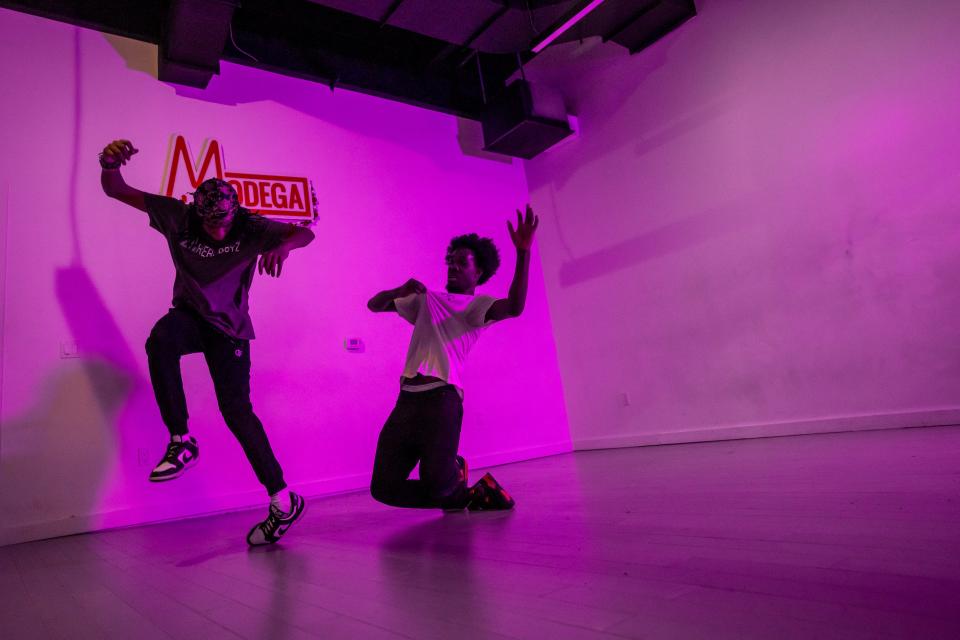
When Jaeran Mauricio dances on the subway cars of Manhattan, he is not some random kick flipper. He does not hold out a baseball cap and beg for dollar bills. He is a conservator, a museum made animate, a teenage etymologist sweating out new translations of old Black vernacular culture recognizable perhaps to his grandmother’s grandmother’s grandmother.
And he knows it.
“I like Litefeet because we have these structures,” Mauricio said recently, tucking his words behind his hazy speech and his veil of cornrows. “I think of it like I’m writing a story about myself. Like, ‘Hello. My name is Loco. I’m gonna tell you a story about where I come from.’”
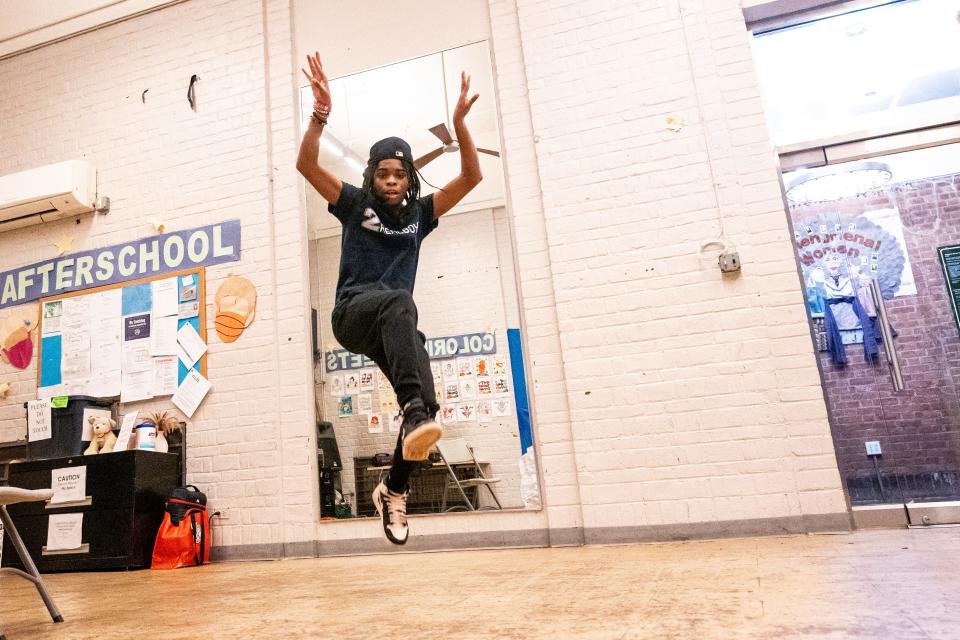
The four-round battle
Litefeet dance happens so quickly, and its structures are so hidden, it’s difficult for outsiders to understand. But it’s easy enough for anyone to find. The most popular Litefeet videos have received more than 70 million Instagram views apiece. Litefeet dancers competed on America's Got Talent, where they won Simon Cowell’s golden buzzer. Ellen DeGeneres invited them onto her show three times. Litefeet moves appear in commercials for Target; in the big dance sequence at the heart of “In the Heights,” Lin-Manuel Miranda’s latest movie; and in the Brooklyn Nets halftime show at Barclays Center.
It’s easy even for an outsider to find a dance battle, where Litefeet is practiced in its most esoteric form. New York’s latest battle occurred not in an abandoned warehouse in some corner of the Bronx, but in Long Island City, near an eruption of glassy condominium towers, in a dance studio with excellent ventilation and a propped-open door.
The event was hosted by Jay Black, a Litefeet dancer and teacher. Black’s mother stood in the lobby with about 100 dancers, serving chicken empanadas she’d fried at home.
“It’s gettin late, yo!” Black yelled into a red megaphone at 8:15 p.m. one recent Saturday. “Everybody please finish your food and come into the studio. Let’s show these dancers some love!”
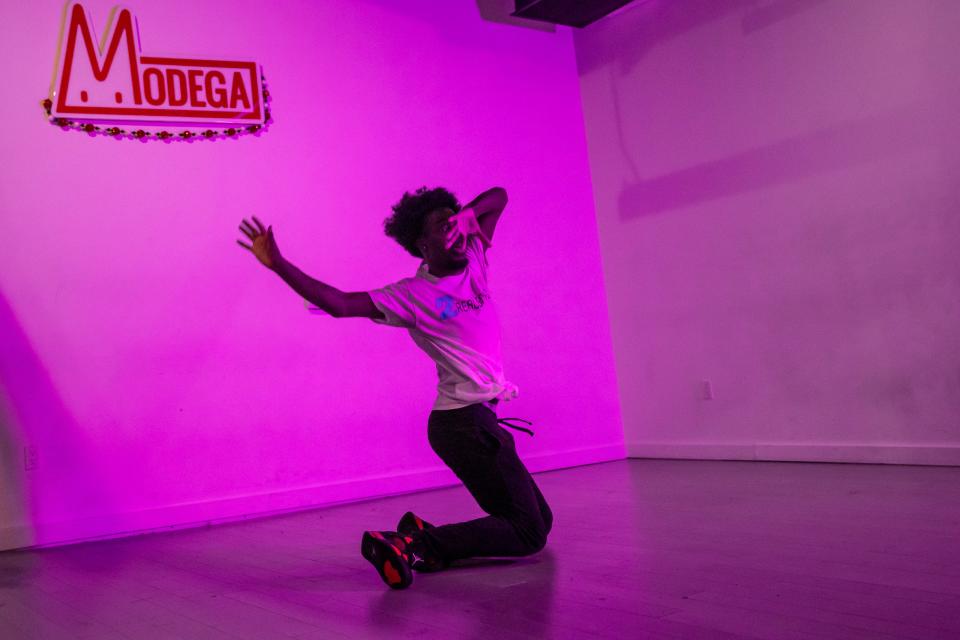
Inside, Mauricio stood with members of Bombsquad and the Loonatics, the evening’s competing dance crews. Bombsquad wore black, Loonatics blue. Mauricio greeted all with a hug, and a shy flash of his rock star smile.
Loco battled first. His opponent, a dancer called Tre Buckz, opened with the Running Man. He hopped, clapping his hands under both knees. Even these basic movements seemed tired, lacking in crispness.
Loco shuffled to the heart of the dance circle. He swung his heels in a modified Swingout, borrowed from the Lindy Hop, a dance craze invented in Harlem nearly a century ago. He, too, did the Running Man. But perhaps to taunt his opponent, Loco complicated this simple move, breaking it into quarters with a stutter-step pop at the bottom and top of the swing. This exploded into fast leg sweeps, and even faster ankle-breakers, followed by a slow-motion crossover dribble, a basketball move performed with no ball.
“Ohhhhhh!” went the crowd, clutching their heads and stomping the floor.
Breaking tempo? Flashing move to move to move without a single pause? Please. The first battle of the evening was no battle at all. Loco won the judges’ votes three-zero.
“If you’re a Litefeeter and you go to these events, you’ve seen Loco for years,” said Dashawn Martin, a battle judge and Litefeet dancer known as Moe Black. “But this summer is when he took his leap. You can see he’s been working hard, developing his own style. He’s got it now.”
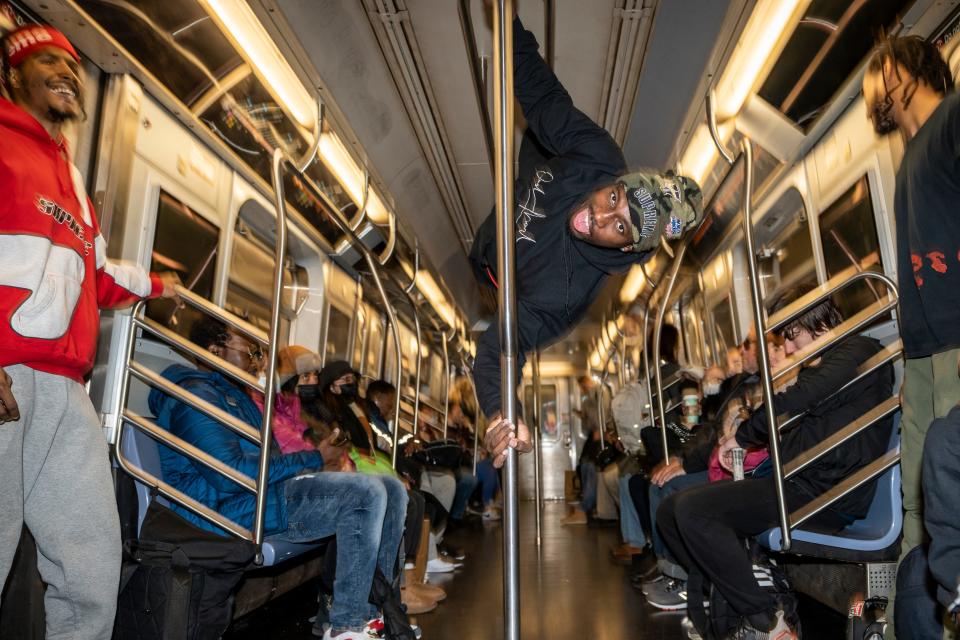
The main event, a four-round battle between Bombsquad and the Loonatics, started a few hours later. The first dancer up was a Loonatic called YouGottaDo. Miming, he seemed to sprinkle cocaine onto his forearm, then snort it into his nose. A minute later he repeated the move, only this time lying flat on his belly. Next came Static, a thin Loonatic dancer who writhed his torso like he was made of Jell-O.
The Loonatics flowed. Bombsquad popped. Kid Smoove, Bombsquad’s founder and CEO, pulled a clean Five Thousand while flipping his baseball cap on his forearm.
NoahLot, a bushy-bearded Bombsquader, started by mimicking YouGottaDo’s cocaine move, only at twice the speed. He did a fake Lock-In, pretending to finish his set. Then he turned to the Loonatics team and yelled, “What you mean?”
These moves came in the first eight seconds of NoahLot’s set. Imagine Fred Astaire starting a solo by brushing dirt off his shoulder.
“When was your last session?” Martin said of the Loonatics’ routines. “You look like 2014!”
'A battle dance style'
Litefeet started as a social dance, performed at parties. Over time, battles became the primary way for Litefeet dancers to prove their mastery, said Daniel Holloway, 36, perhaps the oldest member of Litefeet culture. As the standards for what’s considered “good Litefeet” continue to evolve in speed and sophistication, battles provide the forum for community members to punish dancers who fail to keep up.
This natural-but-enforced evolution also builds a wall between Litefeet and mainstream culture, ensuring that Litefeet dance remains hidden from the wider world.
Mauricio practiced every day for two years before he was deemed ready for full acceptance into the Litefeet hierarchy. How many people who dance primarily with friends at weddings are willing to spend two years learning a dance that’s evolved to look so awkward and strange?
“Litefeet is no longer done at parties,” said Holloway, who in 2006 was among the first to identify as a Litefeet dancer.
“It’s more athletic, and way more syncopated. It’s become more of a battle dance style,” said Holloway, who dances as Chrybaby Cozie. “The battle has reached a level of execution where the everyday practitioner has to say, ‘Either I get to that next level, or I find another approach.’”
Not everyone agrees with this rigid imposition of modern Litefeet standards. At parties, every dancer with the Loonatics can rule the dance floor. But at a Litefeet battle, the assumption is that everyone can dance. The question is whether dancers can fit their incredible moves into Litefeet’s hidden three-part architecture, which mandates an introduction, a freestyle and a booming Lock-In, ending the performance the same way an exclamation point completes a sentence.
“You can put Litefeet moves into your routine,” said Malcolm Pinckney, whose Litefeet song “Go Mode” was performed by dancers last season at every Brooklyn Nets home game. “But that doesn’t make it Litefeet.”
The Loonatics did not respond well to NoahLot’s provocations. Insults were made. Loonatics approached the judges’ table to make angry pleas. Talk spread of a possible fistfight outside.
As the argument grew, a universally respected Litefeet dancer named 40 Pounds demanded control of the red megaphone. He raised it to his lips and addressed the angry Loonatics:
“Your moves were hype!” 40 Pounds yelled. “But ya didn’t Lock-In!”
Rules. Structure. A grid that delineates chaos. The best Litefeeter is the dancer capable of convincing outsiders that every move is an improvised explosion, while communicating to friends within the culture that Litefeet’s secret structure remains squarely intact.
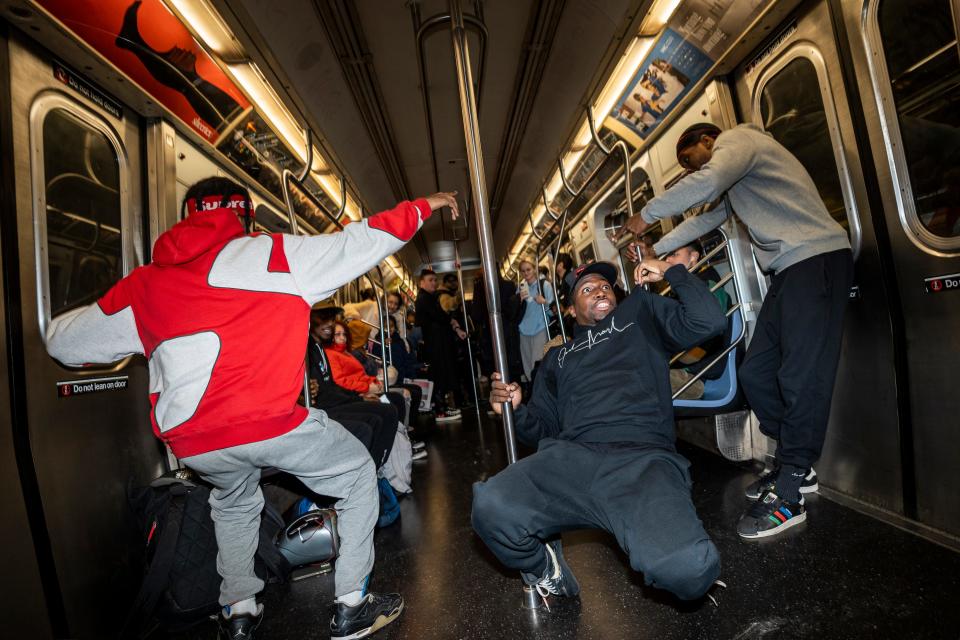
“I can’t credit you if you’re just doing straight moves. That’s a run-on sentence,” Martin said. “There’s a hierarchy. And that’s important.”
Most hip-hop genres continue the ancient three-part sentence structure of Black vernacular dance, Moncell Durden said. But few genres are as rigid about it as Litefeet.
“Other dances in hip-hop follow that same structure,” Durden said, “but it’s not so defined as with Litefeet.”
The Loonatics chafe against the rules. Dancers like Mauricio embrace them. His reward comes in the form of ecstatic praise. In November, Mauricio filmed himself dancing a complex set of cross-steps and wavy hand motions on a tennis court by the Major Deegan Expressway. He posted the video to Instagram.
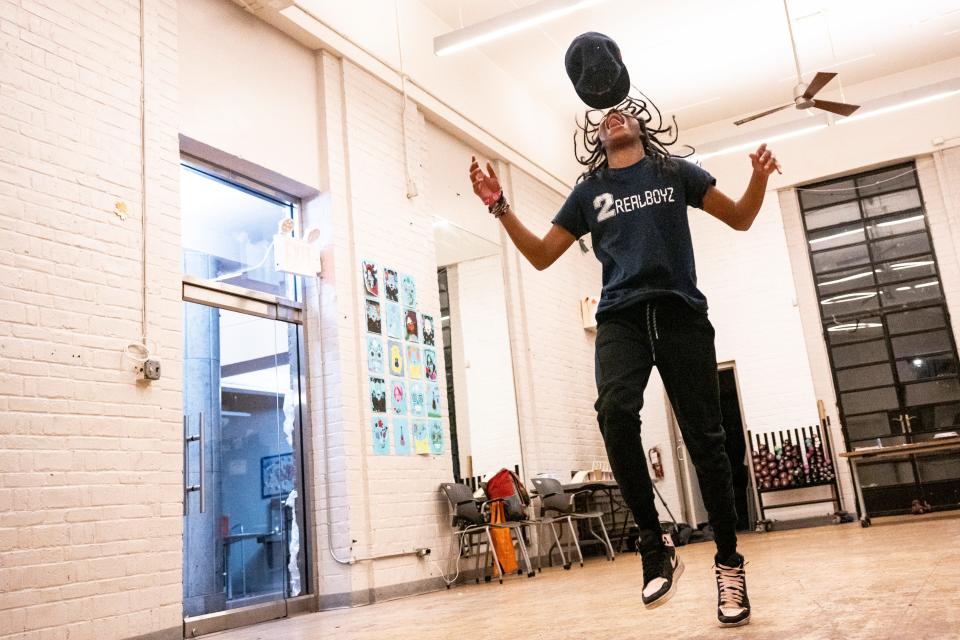
In the comments, one fan was effusive:
“Yeaaaaaaaa ganggggggg watch that whole vid about three times like nah you can’t be tweaked with bro.”
More Christopher Maag:The system didn't care when Robin West disappeared. Now, her murderer faces justice again.
Paterson:Targeting Retaliation: Stopping the chain reaction of gun violence
'They wanted more joy'
Credentialed experts in the history, performance and teaching of Black popular dance feel the same way.
“I’m not a Litefeet practitioner. I just enjoy watching people who are really good at it,” said LaTasha Barnes, a dance professor at Arizona State University. “Litefeet has the vestiges of jazz within it. They wanted more joy. So they made it.”
Litefeet dancing is complex, polyrhythmic and intensely athletic. Its rules were chosen, not imposed. As a kid in East Harlem, Holloway experienced all the hip-hop and breakdancing moves popular in the 1990s. But he had no instruction, no adults around, nobody showing him that just below the surface of every dance routine in every hip-hop music video lay the formal structures of Black vernacular culture.
“I didn’t have any examples around me, because this form was very new,” Holloway said. “I didn’t know the Charleston is an ancestor of what we do today.”
Right now, tonight, in the Bronx, in Harlem, in East New York, Litefeet dancers are borrowing moves like words from the Charleston and the Lindy Hop, the Texas Tommy and the Twist. They are building a secret language, with rules of grammar and syntax only they can decode. They decide who is fluent. Only they decide who is not.
“I can honestly say a lot of people don’t know what it really means,” Holloway said.
As we talked on the phone, Holloway described “it,” this complex pairing of structure, rhythm, improvisation and personal style that he defines as Litefeet. He was playful, speaking quickly, excited to share the inner workings of this thing he helped invent.
Then he reconsidered.
“Please don’t publish that,” he said. “Because it gives away the secret.”
Christopher Maag is a columnist for the USA TODAY Network. To get unlimited access to his unique perspective on greater New York’s most interesting people and experiences, please subscribe or activate your digital account today.
Email: maag@northjersey.com
Twitter: @Chris_Maag
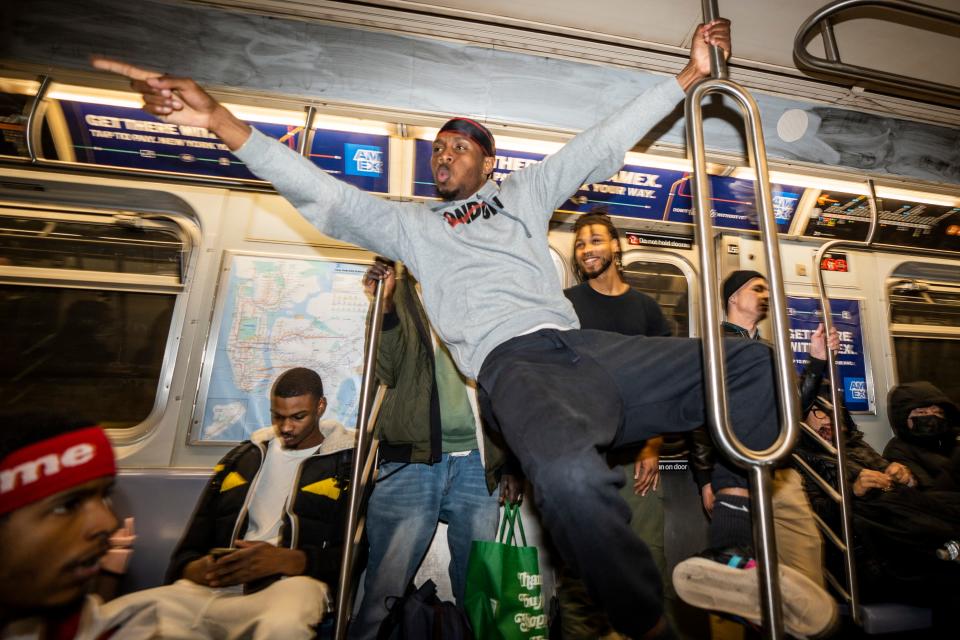
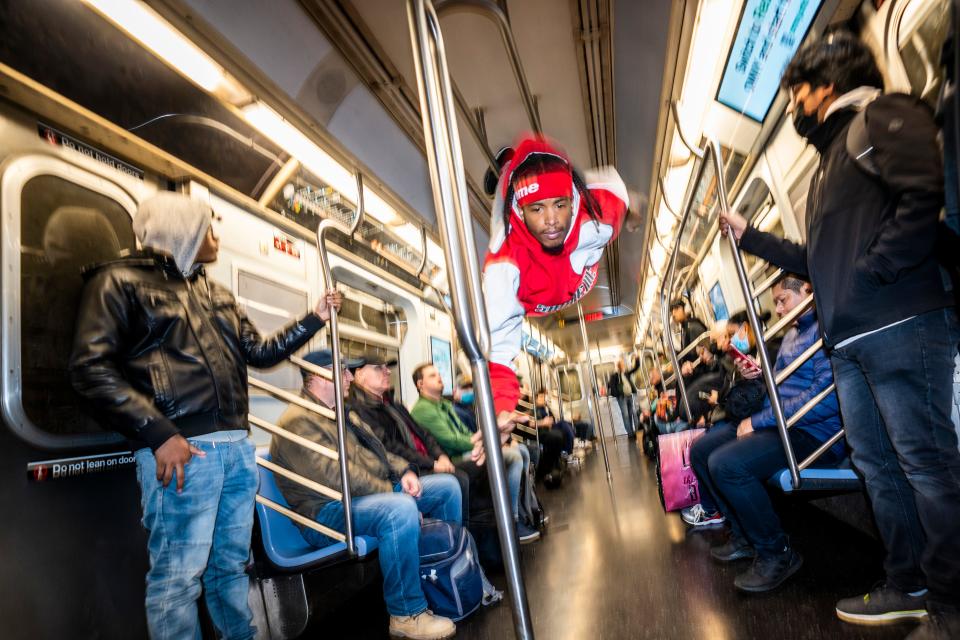
This article originally appeared on NorthJersey.com: From Africa by way of the Bronx, a hip-hop dance follows the rules

